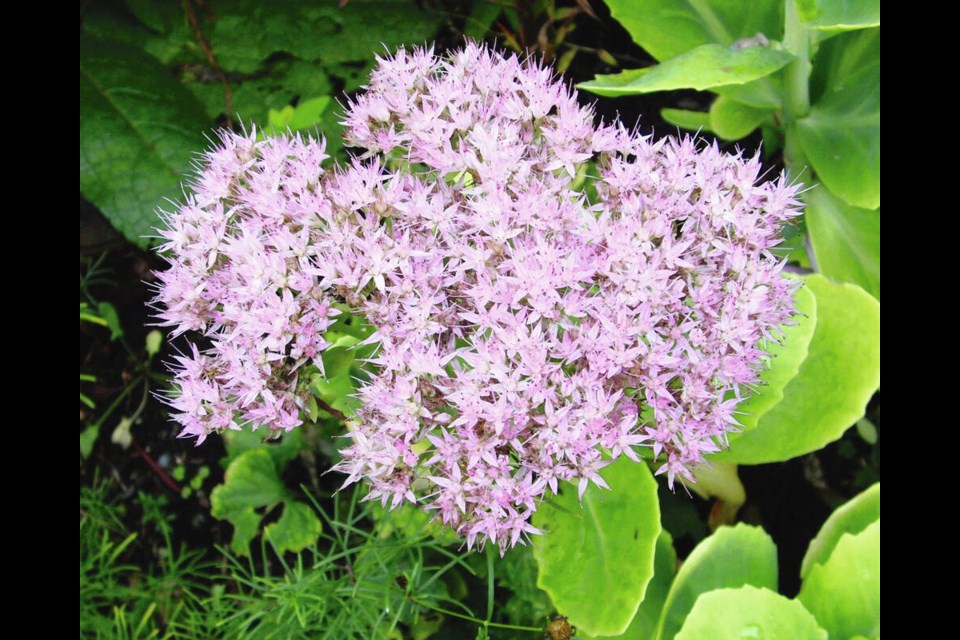Dear Helen: The rising rates on our metered water are making the cost of keeping our garden adequately watered very expensive. Most of the water is used for our vegetables, which we value highly as sources of fresh, nutritious food for our family. Can you recommend any measures to maintain moisture levels needed to sustain productive growth, with reduced watering?
M.N.
A good part of the answer to your watering challenges lies in the soil. Incorporating enough organic matter into the soil to create a spongy, moisture-retentive mass that still drains efficiently of excess moisture in times of heavy rainfall creates the foundation for healthy, productive growth.
Prior to planting, I mix a layer around five cm deep of compost into the soil, along with lime (except for potatoes) and a natural-source, slow-release fertilizer.
Grouping plants with similar water needs helps to pave the way to efficient water use. Among the most water-thrifty vegetables and herbs are over-wintered plants like garlic, broccoli, cabbage and cauliflower; early-sown crops like peas, lettuce, early cabbage and broccoli, roots (carrots, beets, parsnips); pole beans, thyme, rosemary, sage and oregano.
Corn, celery, and summer lettuces, broccoli and cauliflower are among the most water-needy.
Water-thrifty annual flowers; zinnia, marigold, California poppy, alyssum, portulaca, salvia, gazania, cosmos, lantana. Perennials: red valerian (Centranthus ruber), rock rose (Helianthemum), sedum, sempervivum (han and chicks), gloriosa daisy.
Keep in mind that even drought-tolerant plants need watering enough to keep the soil modestly moist during the seed germination and transplant settling-in time. Drought tolerance, for most plants requires well developed root systems.
Timing of plantings can affect their water needs. Seeding cold-tolerant, heat-sensitive plants (peas, lettuce, root vegetables, early broccoli and cauliflower) as early as reasonably possible gives the best chance for plants to begin developing well while the soil remains moist in the spring and before heat begins the drying process.
Root vegetables in particular do very well in high temperatures once their roots have begun delving beneath the soil surface into cooler, moister levels by the time extreme heat arrives.
Avoid seeding and transplanting in periods of high heat.
Watering methods that operate close to the ground, as in drip irrigation, are most efficient. Where overhead watering is the only available option, try to use low-key “spot” sprinklers. Or hand water.
Early morning is the best time for watering, before high levels of evaporation kick in. Evening watering is fine if applied at soil level. Sending foliage damp into the night can foster the development of diseases and the proliferation of slug activity.
In regard to watering gardens, avoid the “fast and furious” option and employ instead methods that are long and slow. Water infrequently but deeply.
Mulching around plants and between rows as the weather warms in spring is a great help in reducing evaporation from the soil, keeping soil moist and cool as it protects plant roots. Chopped or small leaves, and straw, are often used.
At the end of the season, mulching materials can be left on the soil as a protective cover over the winter.
Shading materials have become an unavoidable necessity in recent years. Gardeners have been using old, lacy curtaining and lightweight sheets to suspend over heat-sensitive plants. Horticultural shade cloth is widely available, locally and online. I began using it last summer, and was more than impressed with the results.
All of us, in these times of drought, will be occupied with moisture conservation and ground-cooling issues in the upcoming growing season.
GARDEN EVENTS
Dahlia meeting. The Victoria Dahlia Society will meet on Thursday at 7 p.m. in St. Michael and All Angels Church, 4733 West Saanich Rd. Society president Marguerite Casey-Wolnicki will present Waking up Your Tubers. Marguerite will discuss the timing and process for starting dahlia tubers into growth. A question and answer period will follow. Guests are welcome.
Seedy Saturday in Qualicum. The 20th Annual Qualicum Beach Seedy Saturday will celebrate seeds and gardens on Saturday, 10 a.m. to 3:30 p.m. in the QB Civic Centre, 747 Jones St. Admission is by donation. The event will feature a “seed swap” of garden-grown seeds, sales of seeds, plants and gardening supplies, gardening and environmental group information booths, Master Gardeners to answer questions, talks on Perennial Vegetables and Gardening for Native Bees, and a Seedy Cafe. Details on speakers, vendors, and the cafe menu at .



